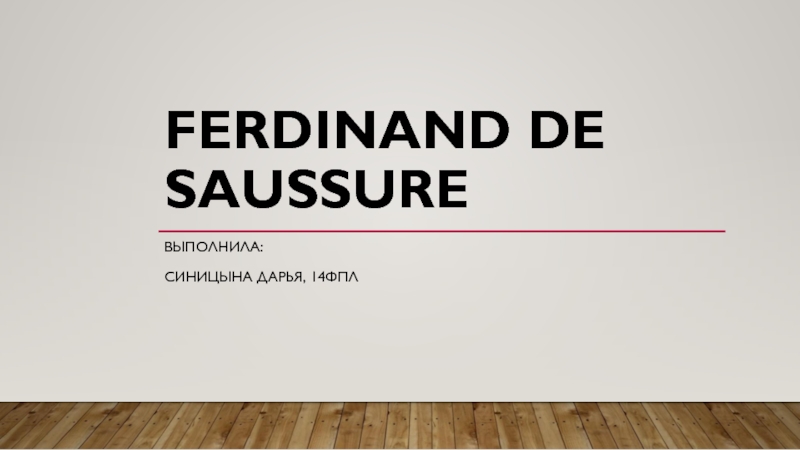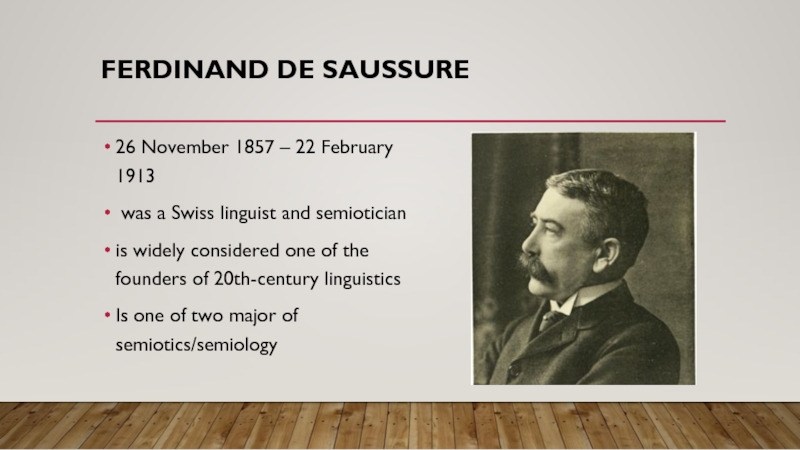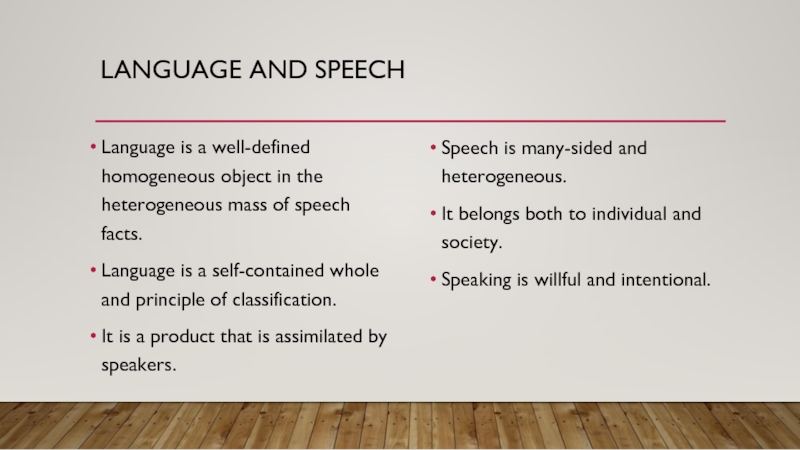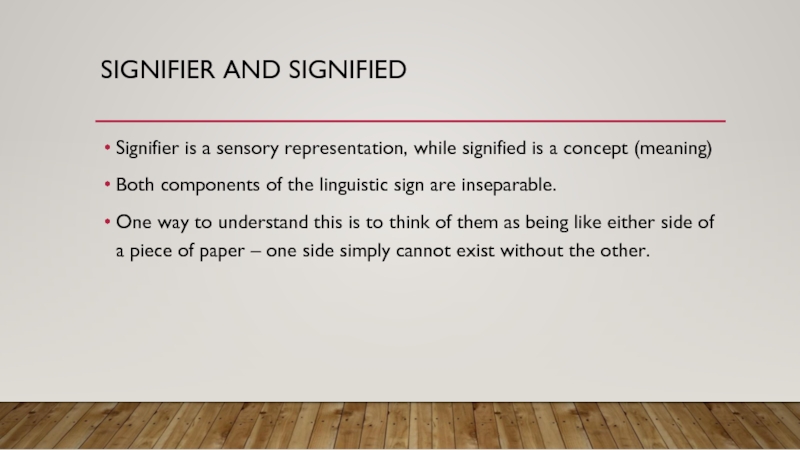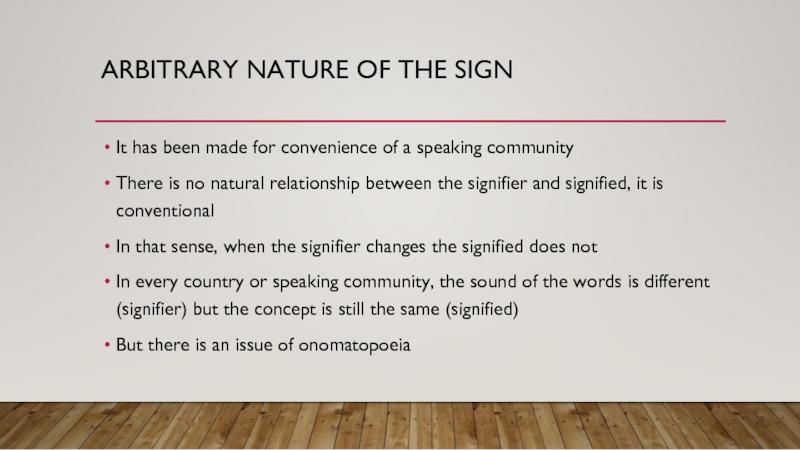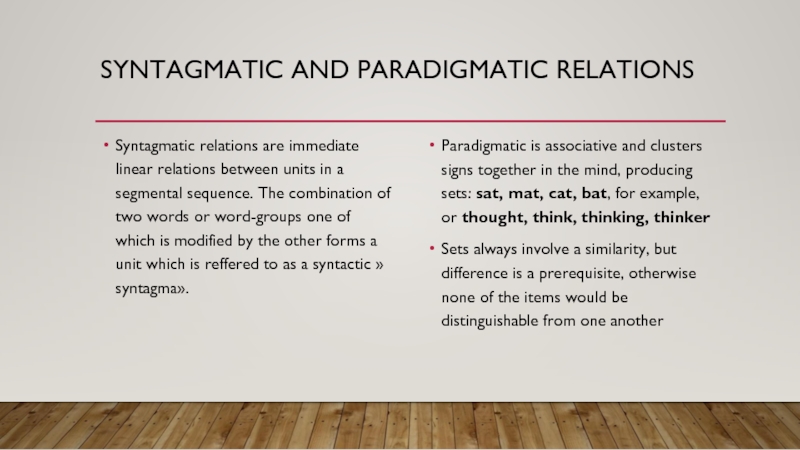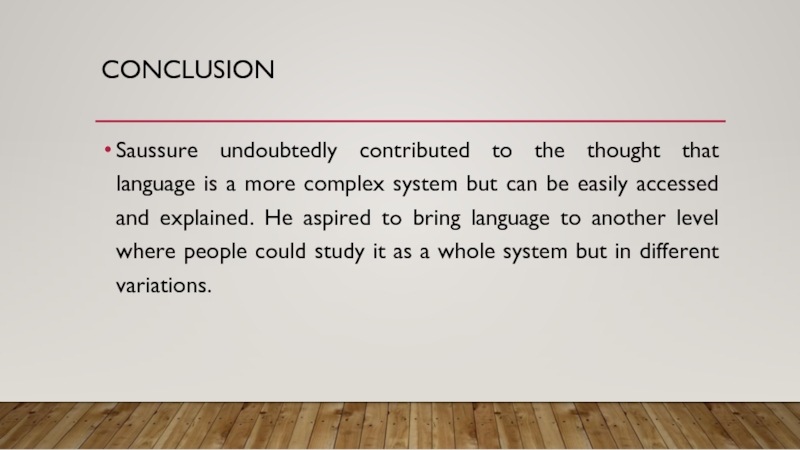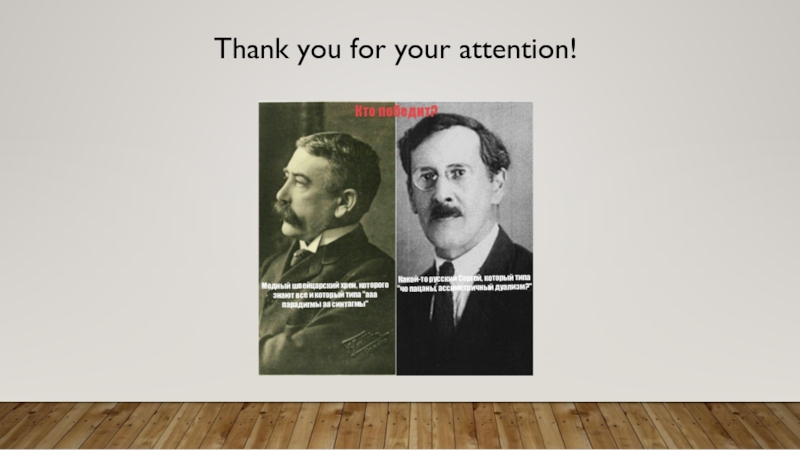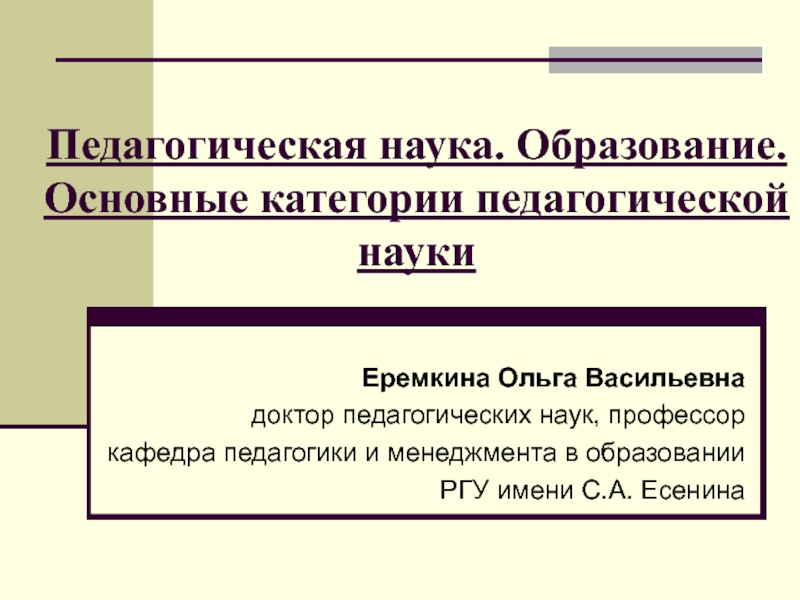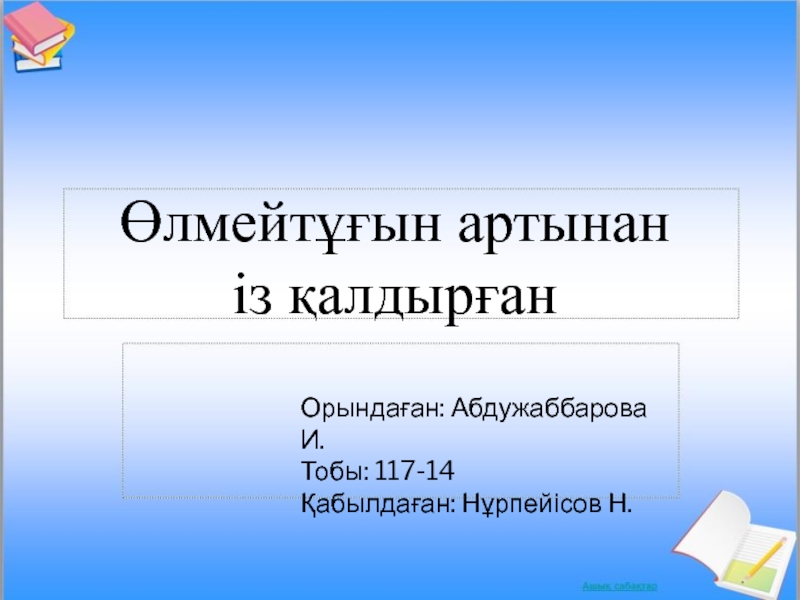- Главная
- Разное
- Дизайн
- Бизнес и предпринимательство
- Аналитика
- Образование
- Развлечения
- Красота и здоровье
- Финансы
- Государство
- Путешествия
- Спорт
- Недвижимость
- Армия
- Графика
- Культурология
- Еда и кулинария
- Лингвистика
- Английский язык
- Астрономия
- Алгебра
- Биология
- География
- Детские презентации
- Информатика
- История
- Литература
- Маркетинг
- Математика
- Медицина
- Менеджмент
- Музыка
- МХК
- Немецкий язык
- ОБЖ
- Обществознание
- Окружающий мир
- Педагогика
- Русский язык
- Технология
- Физика
- Философия
- Химия
- Шаблоны, картинки для презентаций
- Экология
- Экономика
- Юриспруденция
Ferdinand de Saussure презентация
Содержание
- 1. Ferdinand de Saussure
- 2. FERDINAND DE SAUSSURE 26 November 1857
- 3. LANGUAGE AND SPEECH Language is a well-defined
- 4. SIGNIFIER AND SIGNIFIED Signifier is a sensory
- 5. ARBITRARY NATURE OF THE SIGN It has
- 6. DIACHRONY AND SYNCHRONY The signifier is
- 7. SYNTAGMATIC AND PARADIGMATIC RELATIONS Syntagmatic relations are
- 8. CONCLUSION Saussure undoubtedly contributed to the thought
- 9. Thank you for your attention!
Слайд 2FERDINAND DE SAUSSURE
26 November 1857 – 22 February 1913
was
is widely considered one of the founders of 20th-century linguistics
Is one of two major of semiotics/semiology
Слайд 3LANGUAGE AND SPEECH
Language is a well-defined homogeneous object in the heterogeneous
Language is a self-contained whole and principle of classification.
It is a product that is assimilated by speakers.
Speech is many-sided and heterogeneous.
It belongs both to individual and society.
Speaking is willful and intentional.
Слайд 4SIGNIFIER AND SIGNIFIED
Signifier is a sensory representation, while signified is a
Both components of the linguistic sign are inseparable.
One way to understand this is to think of them as being like either side of a piece of paper – one side simply cannot exist without the other.
Слайд 5ARBITRARY NATURE OF THE SIGN
It has been made for convenience of
There is no natural relationship between the signifier and signified, it is conventional
In that sense, when the signifier changes the signified does not
In every country or speaking community, the sound of the words is different (signifier) but the concept is still the same (signified)
But there is an issue of onomatopoeia
Слайд 6DIACHRONY AND SYNCHRONY
The signifier is manipulated by the speaking community
Sign has the capacity to change, to adapt to the social and cultural environment
Diachrony studies the terms of the evolution of the language through time
The sign that does not change through the time and does not accept a linguistic change, is studied by synchrony
Synchrony analyzes a particular moment of language in a determined time with the aim of following its evolution
Слайд 7SYNTAGMATIC AND PARADIGMATIC RELATIONS
Syntagmatic relations are immediate linear relations between units
Paradigmatic is associative and clusters signs together in the mind, producing sets: sat, mat, cat, bat, for example, or thought, think, thinking, thinker
Sets always involve a similarity, but difference is a prerequisite, otherwise none of the items would be distinguishable from one another
